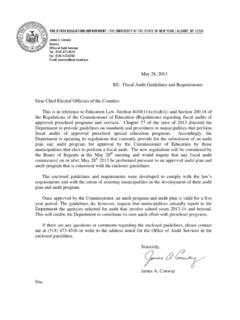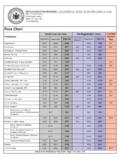Transcription of IncubatIng SucceSS - edaincubatortool.org
1 ReseaRch PaRtneRs:the university of Michiganthe university at albany , state university of new yoRknational bUsiness incUbation associationcybeRgRoUP, beSt PractIceS that Lead to SucceSSfuL new VentureSthe university of MIchIganthe university at albany , State university of new yorknatIonaL buSIneSS IncubatIon aSSocIatIoncybergrouP, for further information:national business Incubation association(740) IncubatIng SucceSS . Incubation Best Practices That Lead to Successful New Ventures Authored by David A. Lewis, Elsie Harper-Anderson, and Lawrence A. Molnar IncubatIng SucceSS : Incubation Best Practices That Lead to Successful New Ventures Research Principal Investigator: Lawrence A. Molnar, university of Michigan Research Director and Primary Author: David Lewis, university at albany SUNY Editor: Linda Knopp, National Business Incubation Association Graphic Design: Catherine Laurion, Center for Business Acceleration and Incubation Studies, university of Michigan, and Kim Barlag and Kate Erlewine, National Business Incubation Association 2011 university of Michigan Institute for Research on Labor, Employment, and the Economy, university of Michigan, Ann Arbor, Michigan Printed in the United States of America1 I.
2 3 II. Executive Summary .. 5 III. Literature 13 A. Introduction .. 13 B. Trends .. 14 C. Road Map .. 14 D. Defining an Incubator .. 15 E. Prominent Business Incubation 15 F. A Sectoral Typology of Business Incubation Programs .. 17 G. Current Trends in Incubation .. 18 H. Alternative Approaches to Incubation .. 19 I. By Sector .. 20 J. By Lead Organization .. 21 K. Economic Development Theory .. 23 L. Regional Program Development .. 24 M. 24 IV. Study Design and Methods .. 35 A. Data Sources .. 35 B. Primary Data Collection .. 35 C. Survey Design .. 35 D. Survey Population .. 36 E. Survey Implementation .. 37 F. Data Analysis .. 38 V. Data Analysis .. 41 A. Sample Bias Analysis .. 41 B. Spearman s Correlation Analysis .. 52 C. Chi-Square Analysis .. 56 D. Predicting Incubator Performance.
3 61 E. Predictive Power of the Constructed Indexes .. 63 F. Predictive Power of Single Incubator Quality Variable .. 65 G. Predictive Power of a General Model Using All Incubator Quality Variables .. 66 2 H. Descriptive Analysis of Host Regions .. 69 I. Regional Capacity Analysis .. 70 J. Key Characteristics of the 49 Top-Performing Programs .. 71 VI. Bibliography .. 75 VII. Annotated Bibliography .. 81 VIII. Glossary .. 102 IX. Appendices .. 108 3 I. ACKNOWLEDGMENTS This project was funded by a grant from the Department of Commerce Economic Development Administration (EDA). Special thanks to the EDA staff that contributed to the project: John Fernandez, Assistant Secretary of Commerce for Economic Development Bryan Borlik, Director of Performance and National Programs, Economic Development Administration Hillary Sherman-Zelenka, Program Analyst, Economic Development Administration A special acknowledgment is due to the National Business Incubation Association (NBIA) for invaluable assistance in developing the project survey instrument, for providing contact information for business incubators in the , and for sharing knowledge of the incubator industry to benefit the project.
4 Thank you to those from NBIA who significantly contributed to the project: David Monkman, President & CEO, NBIA Tracy Kitts, Vice President & Chief Operating Officer, NBIA Dinah Adkins, Former President & CEO, NBIA The project research team expresses its gratitude to the Peer Review Panel, which provided valuable input throughout the project, particularly during the research methodology and design development. The Peer Review Panel was comprised of Mark Rice, Worcester Polytechnic Institute (formerly with Babson College); David Dilts, Oregon Health and Science university ; George Fulton, university of Michigan; Sean Hackett, Drexel university ; Thomas Lyons, Baruch university ; and Susan Matlock, Innovation Depot. The research team is also grateful to Robert Groves of the university of Michigan Institute for Social Research, who provided review of the research design, survey development, and analytic methods.
5 The research team offers a special thanks to the administrative staff of the university of Michigan, the National Business Incubation Association, the university at albany State university of New York, and Cybergroup, Inc., who assisted with the project each day. We re also grateful to the incubator managers and companies who helped to develop the survey instruments. Our final round of thanks goes to those who took time to respond to the survey, for their generous participation has made this entire project possible. 4 Special Thanks and Acknowledgment Greg Bean, Cybergroup, Inc. Carmen Wells Quigg, Project Manager, university of Michigan Eileen Quintero, Research Associate, university of Michigan Catherine Laurion, Research Associate, university of Michigan John Westenberg, Graduate Student Researcher, university at albany , SUNY Niki Vick, Business Administrator, university of Michigan Kimberly Reid, Administrative Assistant, university of Michigan The researchers and authors of the report owe a debt of gratitude to the staff of research associates and university of Michigan graduate and undergraduate students who contributed to this work.
6 For a complete listing of these students, please see the online appendix at http:// 5 II. EXECUTIVE SUMMARY Overview With the help of targeted business assistance, entrepreneurs are better prepared to turn business ideas into successful new ventures that have a greater-than-average chance of SucceSS . Since the first business incubator opened in Batavia, , in 1959, business incubation programs1 have helped new business owners access the resources and assistance they need to grow successful firms. For more than 50 years, these programs have played an important role in improving struggling economies, creating jobs, and encouraging innovation. Business incubation programs are designed to accelerate the successful development of entrepreneurial companies through an array of business support resources and services, developed or orchestrated by the incubation program manager, and offered both in the incubator and through its network of contacts.
7 A business incubation program s main goal is to produce successful firms that will leave the program financially viable and freestanding. Critical to the definition of an incubator is the provision of management guidance, technical assistance, and consulting tailored to the needs of new enterprises. The Department of Commerce Economic Development Administration (EDA), a longtime financial supporter of business incubators, funded this research study to examine the relationship between incubator best practices and client outcomes. This research conducted by the university of Michigan s Institute for Research on Labor, Employment and the Economy; the State university of New York at albany , the National Business Incubation Association, and Cybergroup Inc. used a robust methodology to collect and statistically analyze data, and determine specific relationships between how an incubation program operates and how its client companies perform, as measured by a number of outcomes.
8 The purpose of this study is to test whether there is a causal relationship between business incubation practices and client firm SucceSS , particularly after these firms have moved out of or graduated from the incubation program. Using the results of this study, the research team also created a Web-based tool for incubation practitioners that measures their program s performance compared with industry best practices and provides feedback about how they can improve their performance (see http:// ). Although other industry studies have examined business incubation best practices and trends, this work is one of the first to employ a rigorous methodology to ensure that the surveyed programs meet a minimum threshold of what an incubator is (and is not). To be included in this 1 Words and phrases printed in italic are defined in the glossary, which begins on page 107 of this report.
9 6 study, incubation programs had to have correct and verified contact information, to have been in operation at least five years, to target start-up firms, and to offer at least five commonly provided incubator services, such as help with business basics, networking activities among incubation program clients, marketing assistance, help with accounting or financial management, access to capital, or linkages to higher education resources and/or strategic partners. The research team invited 376 incubator managers whose programs met the study s definition of an incubator to complete an online survey. At the completion of the six-month survey period, the research team had received 116 responses, of which 111 were valid, yielding a effective response rate. The respondents were representative of the geographic distribution of business incubation programs throughout the United States and across incubator industry sectors.
10 This study substantially extends industry knowledge of the predictive power of incubator practices on firm SucceSS . Further, many predictive models based on incubation program attributes were highly accurate in predicting program SucceSS (up to 80%). The analysis of both the qualitative and empirical data point to the same conclusion: Business incubation practices matter more than program age or size or the host region s capacity for innovation and entrepreneurship when it comes to incubator SucceSS (see Chart 1). Aggregating the findings from the discriminant analysis of 24 business incubation program outcome variables indicates that, on average, incubator program quality variables predicted of the outcomes correctly, compared with predicted by regional capacity variables.






